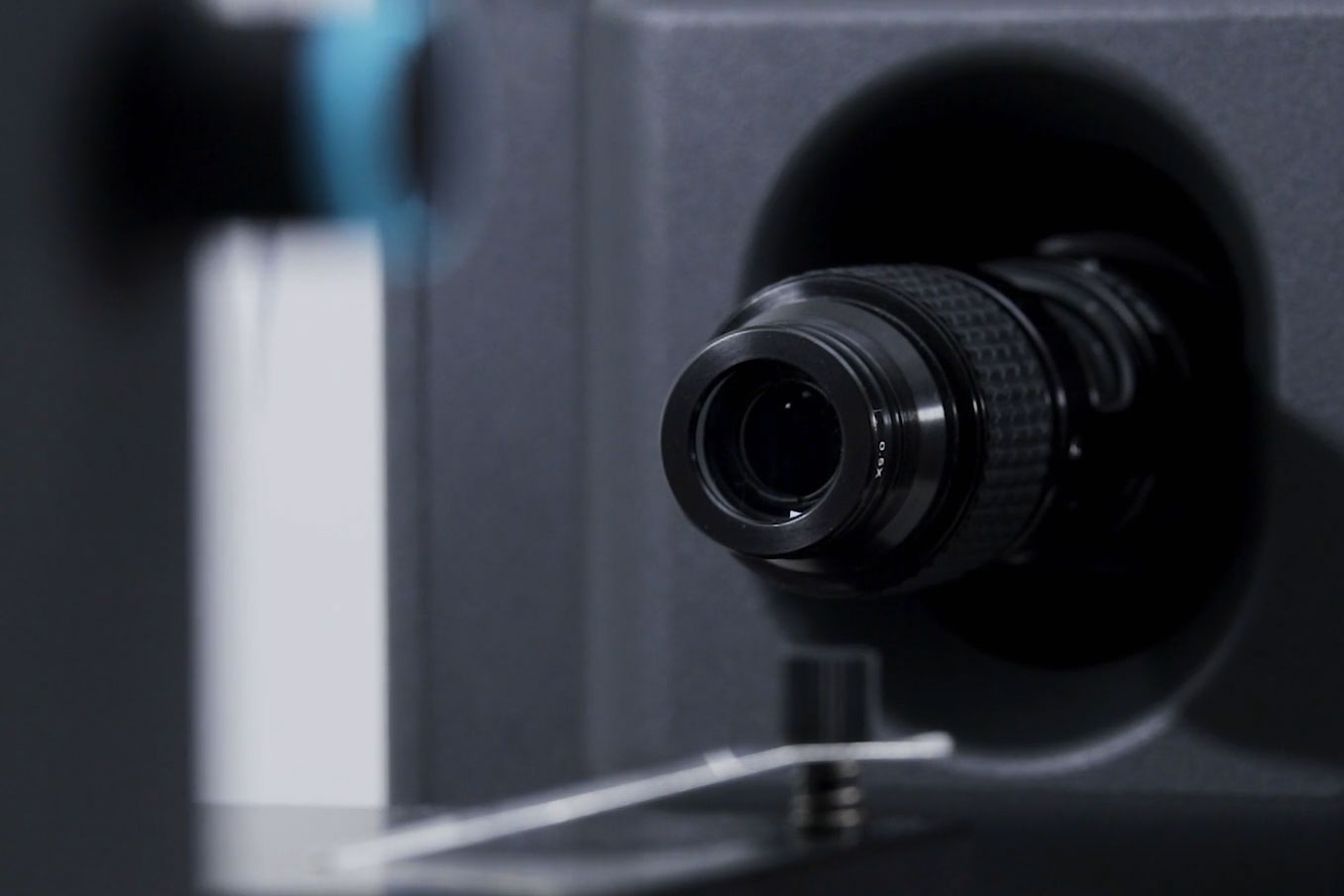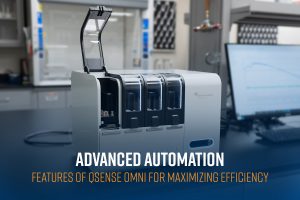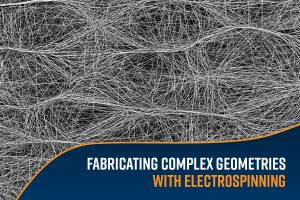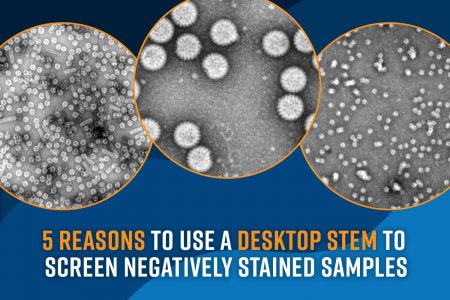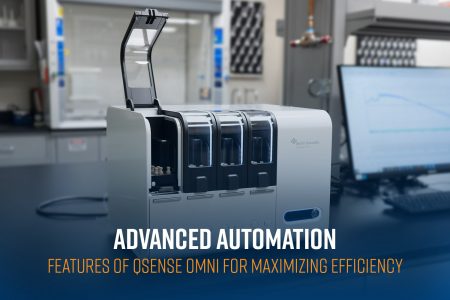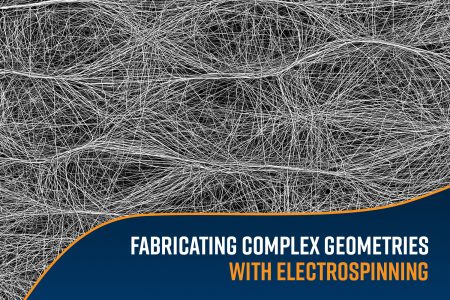An optical tensiometer, also known as a contact angle goniometer, is an instrument used to characterize material surface properties and interactions between liquid and solid phases. In the simplest experiments, the optical tensiometer places a drop of liquid on the surface and records and analyzes the shape of the drop. The tendency of the drop to spread across the surface is a function of the surface tension of the liquid, gravity, the difference in density of the sample liquid and its surrounding medium, and the properties of the solid surface. Optical tensiometers are used in many industries and scientific disciplines to collect a wide variety of surface measurements, including contact angle, roll-off angle, surface free energy, surface tension, and interfacial tension, among others. The contact angle measurement carried out with an optical tensiometer is the most extensively used method to characterize and quantify the wetting properties of a surface.
An optical tensiometer typically consists of a light source, a liquid dispenser, a sample stage, and a camera. Together, these components can produce images of liquid droplets on solid samples. The image captured by the optical tensiometer is analyzed using a drop profile fitting method to determine the contact angle made by the droplet sitting on the surface material. The contact angle values can then be used to calculate and quantify several properties of the surface.
Contact angle measurements:
Contact angle measurements need high-quality droplet images for the surface characterizations to be accurate. The resolution of the camera affects the level of detail and precision in the captured images. Higher camera resolution generally means that more pixels are used to form the image, resulting in sharper and more detailed pictures. This can be particularly useful when analyzing fine details or small changes in the liquid interface. A balanced pixel contrast in the image is also critical since the analysis of the droplet shape for contact angle measurements relies on accurate edge detection.
All about the Baseline:
The contact angle is defined as the angle formed by a liquid droplet on a surface where the three phases, air, liquid, and gas, intersect. The baseline, which is the solid-liquid interface is used as the reference when the contact angle measurements are made. The accuracy of contact angle goniometry depends on the precision with which the contact points between the 3 phases and the baseline can be determined. Accurately identifying these parameters is made difficult due to the distorted and blurred images at the interface. The inaccuracies in contact angle measurements are more pronounced on hydrophobic and superhydrophobic surfaces.
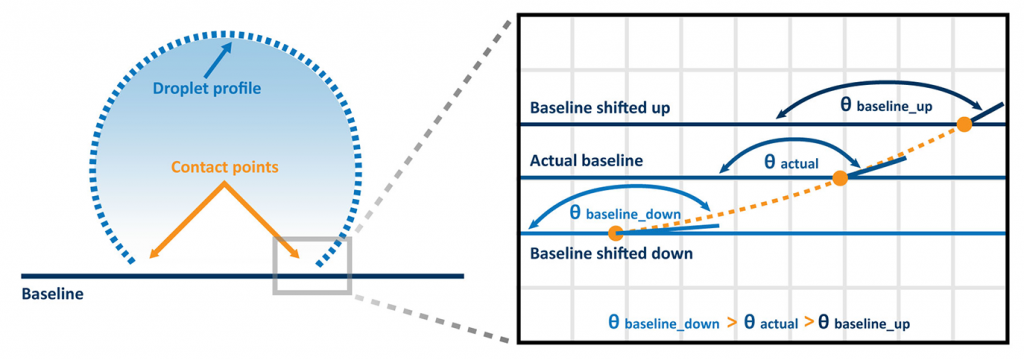
The magnitude of error in defining the droplet profile and the baseline is dependent on the image resolution. A recent study explored the effect of shifting the baseline by one pixel, either up or down on the measured contact angle (1). Previous studies have shown that uncertainties of droplet baseline by 1 micron can lead to errors in contact angle measurements as great as 10° (2). As a single pixel or subpixel of the camera image can contain a few microns and further magnify the error, this study investigated the effect of pixel density on measuring the contact angle. When using a high-resolution camera, changing the baseline by 1 pixel only introduced an error of 1° in the measured contact angle. However, when using a low-resolution camera, changing the baseline by 1 pixel introduced an error of approximately 4° in the measured contact angle. These errors scale substantially with droplet pixel resolution. Thus, using a more performant optical tensiometer with a higher-resolution imaging system will give more accurate results.

Theta Flow:
The Theta Flow optical tensiometer has the highest resolution camera (2592 x 2048, or 5 MP) of any optical tensiometer available on the market. This high-resolution camera, which is equipped with autofocus capabilities, ensures that droplet fitting and baseline positioning errors are minimized. Combined with the Droplet Plus software technology which helps with visualizing and defining the droplet baseline, the resulting contact angle calculation is the most accurate possible. This minimizes potential errors that can occur with lower-resolution systems, particularly with high contact angles on hydrophobic and superhydrophobic surfaces. The Theta Optical tensiometers also consistently and automatically balance the pixel contrast in the images, enabling accurate droplet edge detection.
Conclusion:
A higher camera resolution allows for more accurate measurements and improves the overall performance of the optical tensiometer. It enables users to obtain precise data and make more reliable calculations. However, the specific resolution required for a particular application may vary depending on the intended use and the characteristics of the studied liquid and surface.
It’s important to note that the camera resolution is just one aspect of an optical tensiometer. Other factors, such as lighting conditions, lens quality, and image processing algorithms, also contribute to the overall performance and accuracy of the device. Therefore, when considering an optical tensiometer, it is essential to evaluate the specifications and capabilities of the entire system rather than focusing solely on the camera resolution.
Citations:
[1] Uncertainties in contact angle goniometry – Soft Matter (RSC Publishing)
[2] Characterization of super liquid-repellent surfaces – ScienceDirect

